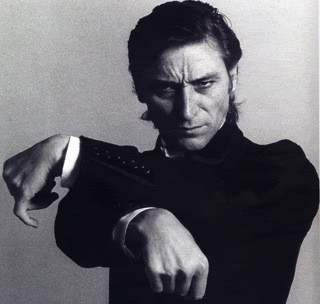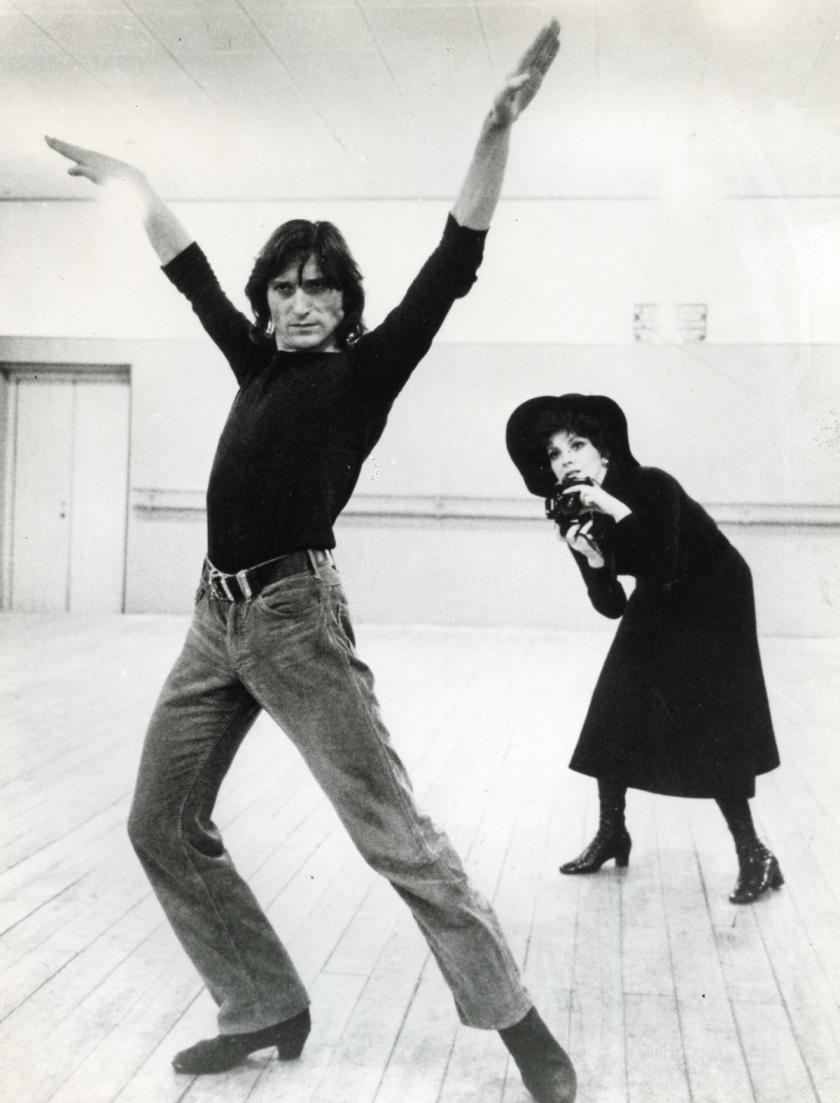Antonio Gades, who died on 20 July 2004 in Madrid aged 67, was a giant of modern flamenco, a magnetic dancer and theatrical director who gained an international audience for flamenco while guarding its unique and complex character. His dance films and flamenco theatre productions, notably Blood Wedding and Carmen, trod the difficult line between modern innovations and ancient traditions, pleasing millions around the world while also being acclaimed by flamenco's purist cognoscenti. He himself despised many of flamenco's modernisers, particularly at the showbusiness and pop-culture end, holding that "culture has become a whore".
An exceptionally handsome man, though not tall, Gades was considered one of Spain's most fascinating dancers in the 1980s, and he had no false modesty about his ability. He was said to have described himself as "the greatest male dancer alive" - when this remark was reported to Rudolf Nureyev, the great ballet-dancer said: "Join the club."
Born to a poor, Communist family near Valencia, Antonio Gades was not an Andalusian gipsy - as so many flamenco artists can claim - but even when he became an international celebrity he did not waver from his passionate attachment to his class.
He had numerous run-ins with General Franco, the hate-figure of much of his life, and found Cuba's Fidel Castro a far more congenial figure. Last month [June 2004], though frail from advancing cancer, Gades travelled to Havana to receive Cuba's top personal award from Castro, who had also admitted him to Cuba's Communist Party, a rare honour for foreigners.
Gades's socialism drove his art as much as his life, and he had no time for what he considered the dangerous irrelevancies that surrounded the rediscovery of flamenco in the 1970s and 1980s. In an interview with The Daily Telegraph in 1997, he said: "You don't have to go to school to be a human being, but only to be born." He believed it more important that flamenco speak truly of this than that it be the subject of artificial arguments as to which performer was the more Andalusian or had the purest gipsy blood.
Although he was much-travelled himself, he deplored the shallow homogenising of tastes caused by tourism, and the bland internationalism it fostered in entertainment. "It is about the difference between popular and populist," he insisted. "Popular is of-the-people; populist is prostitution." On the subject of his polar opposite in flamenco, the mass-entertainment dancer Joaquin Cortes, Gades refused to speak. "My silence is my shout," he said.
Antonio Gades, the son of a labourer, was born Antonio Esteve Rodenas at Elda in the province of Alicante on November 14 1936, the year that the Spanish Civil War broke out. The family soon moved to Madrid, which did not fall to Franco's Nationalists until the end of the war, in 1939. Antonio left school at 11 and then did a variety of part-time jobs, including bullfighting and boxing.
Bullfighting is one of the most powerful influences, emotionally and physically, on flamenco, and Gades later said it had been a useful apprenticeship for his dancing.
At 15, he took a job performing in a cabaret - "I began to dance from hunger, and my vocation came later," he once said. There he was spotted by the leading flamenco performer Pilar Lopez and invited to join her Ballet Espanol. It was she who renamed him, and she taught him classical ballet and folk dance as well as flamenco.
Gades took just one season to demonstrate his mastery of the intricacies of Spanish dancing. The next year Pilar Lopez promoted him to the rank of principal dancer in her troupe, and for the next nine years he performed in the leading theatres of the word with the Lopez company. Pilar Lopez patiently introduced him to an exhaustive anthology of Spanish dance that included both its classical and popular facets, including flamenco.
 It was when he read the works of Federico Garcia Lorca, the Andalusian poet whose legacy helped to revive the almost defunct flamenco culture from the vulgar tourist caricature encouraged by the Franco government, that Gades was inspired to his vocation.
It was when he read the works of Federico Garcia Lorca, the Andalusian poet whose legacy helped to revive the almost defunct flamenco culture from the vulgar tourist caricature encouraged by the Franco government, that Gades was inspired to his vocation.
He formed Ballet Antonio Gades in 1964, and made his London debut in 1970 at Sadler's Wells. One critic praised Gades and his artists for not trying to cater for foreign tastes too much.
Gades's intention to turn flamenco into dance-theatre and tell powerful stories with it resulted in his breakthrough production of Blood Wedding, from Lorca's play, in 1974. Its story of the conflict between true lovers and a vengeful society was to be immortalised in Carlos Saura's film of it seven years later, set starkly in a dance studio. He later drew on Lope de Vega's classic about peasant uprising, Fuenteovejuna (1994), using Spanish folk dance rather than flamenco.
His flamenco version of Carmen successfully reclaimed for Spain the French heroine of Bizet's opera and Merimee's book, and also became a magnificent Saura film, starring the magnetic Gades himself as Don Jose. A third film, El Amor Brujo (1986), was based on the score of Manuel de Falla, the composer who had worked with Lorca to bring flamenco back to life.
Antonio Gades's hostility to General Franco made for tension, and in 1975 he quit his country and went to live in Cuba when Franco sentenced five Basque opponents to death. On Franco's death three years later, he returned as founding director of the Spanish National Ballet, though in 1981 he was once again in political trouble and was removed by the ministry of culture.
While the Saura films catapulted Gades to world celebrity, he remained attentive to flamenco's roots, and his researching of its 65 separate song-types helped to provide this ephemeral tradition with a lasting record.
He influenced an entire wing of flamenco modernisers to try to apply theatrical narrative techniques to the dance form, but few could equal Gades's extraordinary flair with storytelling. It was significant that most recent flamenco "innovation" has centred on the more traditional solo dancing.
Gades's last appearance as a dancer in Britain was in Carmen at Sadler's Wells in 1996, when he showed that even illness and age had not diminished the fierce spirituality of his performing. A year ago his old company, the Ballet Nacional de Espana, performed his Fuenteovejuna at Sadler's Wells, once again to great public acclaim.
He died in hospital after a long decline, and asked on his deathbed that his wife, Eugenia Eiriz, and daughters convey his "most sincere thanks to all those who admired and supported his work, and especially to those who accompanied him during the final stage of his life".
- This obituary appeared in the Daily Telegraph on 22 July 2004














Add comment